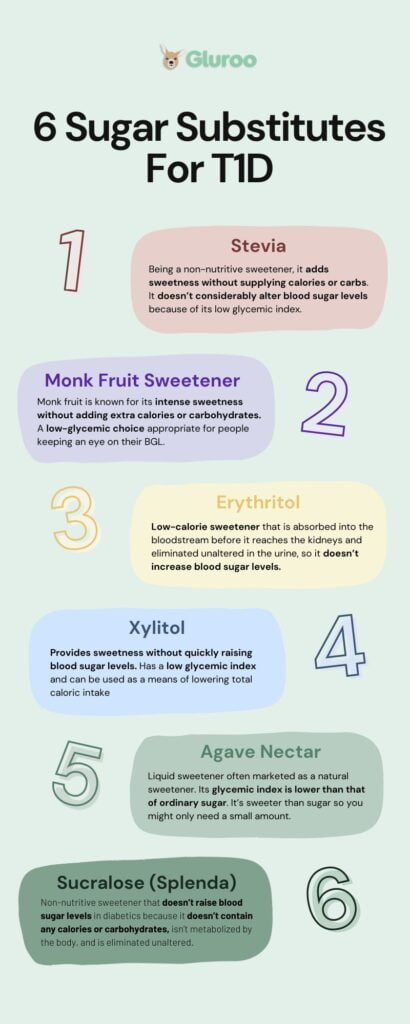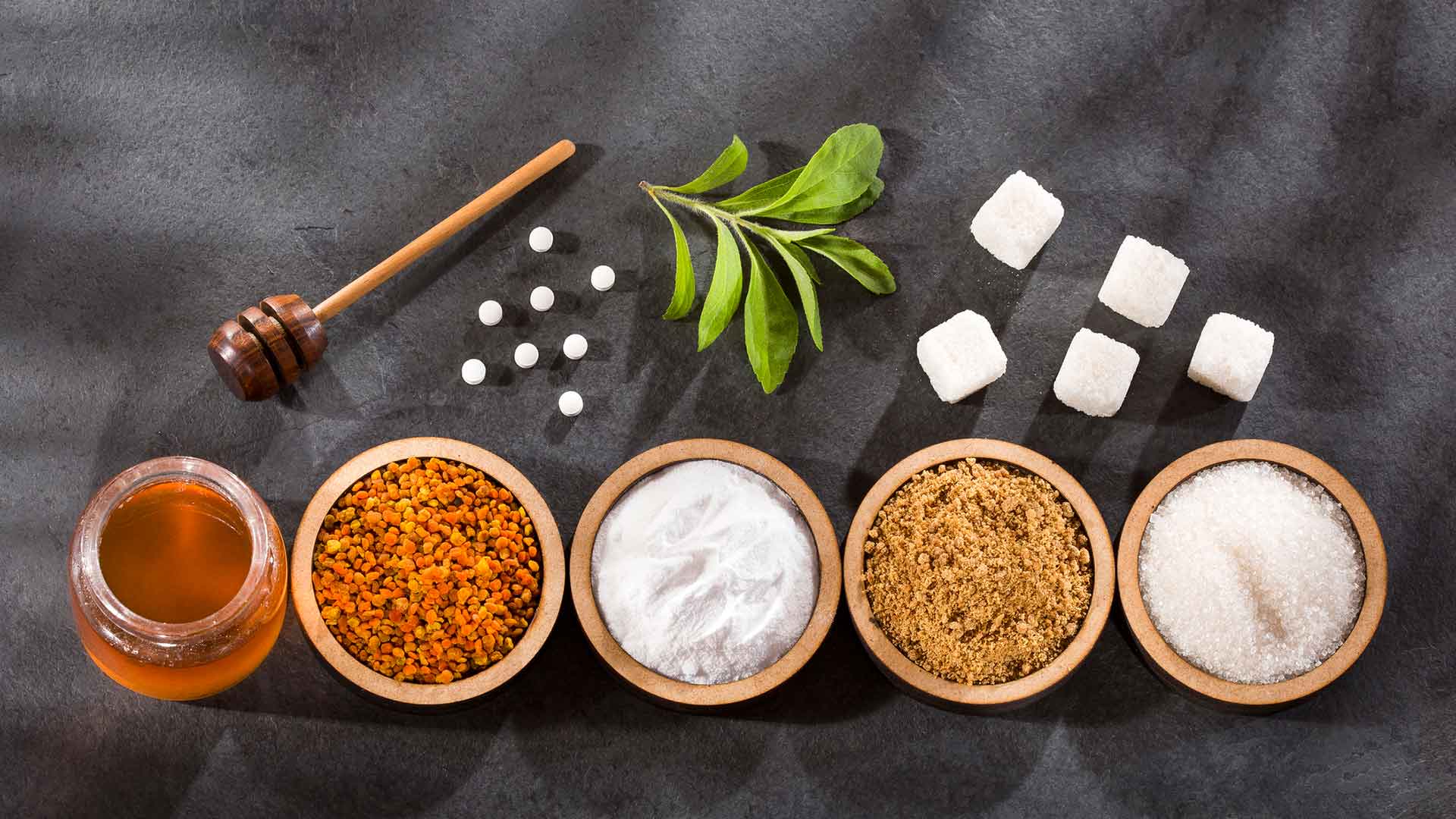There’s a common misconception in the world of type 1 diabetes (T1D) management: sweetness has to be sacrificed.
The truth, though, is not so black and white. People with type 1 diabetes can enjoy sweets. The secret is to approach sugar intake strategically, concentrating on alternatives and portion management so that managing type 1 diabetes can be a harmonious mix of both indulgence and health.
Add a Touch of Sweetness
The delicate balance between sweet cravings and controlling blood sugar levels is something that people with type 1 diabetes must constantly think about.
But this balance is possible to obtain. Here’s a look at how to accomplish that.
- Sugar Alternatives
Embracing sugar alternatives changes everything for people with T1D. Sweetness is available without the negative consequences on blood glucose levels of regular sugar thanks to products like Stevia, Monk Fruit Sweetener, and others. These alternatives can be consumed by people with diabetes because they’re frequently low in carbohydrates and have little effect on blood sugar levels.
Note that sugar alternatives should still be used in moderation – as with most things! To learn more about their pros and cons, you can read the comprehensive overview of artificial sweeteners published by the Mayo Clinic.
- Cautious Portion Management
Portion control becomes essential when using sugar substitutes. To avoid large spikes in blood glucose, moderation is essential.
- Maintaining Nutritional Balance
It’s important to think about the meal’s overall nutritional balance when indulging in sweet treats. A combination of fats, proteins, and carbohydrates can help avoid abrupt spikes in blood glucose levels by slowing down the absorption of sugars.
- Regular Assessment of Blood Sugar
It’s critical to regularly check blood sugar levels. By monitoring the effects of particular sweeteners and portion sizes on blood glucose, you’ll be able to make informed changes to your diet and dosage of insulin.
6 Sugar Substitutes Appropriate For T1D
When choosing sugar substitutes it’s important to take into account aspects like how the substitute will affect blood sugar levels, taste, and adaptability in different cooking contexts.
Here’s a list of six suitable sugar substitutes for diabetics.
1. Stevia
The natural sweetener known as stevia is made from the leaves of the stevia plant. Being a non-nutritive sweetener, it adds sweetness without supplying calories or carbs. It doesn’t considerably alter blood sugar levels because of its low glycemic index.
You can use stevia to add some sweetness to fruit salads and yogurts, replace sugar in baking recipes like cakes and cookies, and sweeten hot and cold beverages like tea and coffee. It can also be used for homemade ice cream, sorbets, and low-carb jams.
For those with diabetes, stevia provides a sugar-free substitute that allows them to enjoy a range of sweets without worrying about controlling their blood sugar levels. Moderation and personal tolerance should be taken into account, just like with any sugar substitute.
2. Monk Fruit Sweetener
Monk fruit is known for its intense sweetness without adding extra calories or carbohydrates. This low-glycemic choice is appropriate for individuals who are keeping an eye on their blood sugar levels.
When it comes to sweetening savory dishes like salad dressings, marinades, and barbecue sauces, as well as desserts like cakes, cookies, and muffins, monk fruit sweetener is perfect. It can also be used in hot or cold beverages like tea, coffee, and iced drinks.
3. Erythritol
Erythritol is a low-calorie sweetener that can be added to food to add sweetness without adding a lot of calories.
This sweetener is absorbed into the bloodstream before it reaches the kidneys and eliminated unaltered in the urine, so it doesn’t increase blood sugar levels.
It also doesn’t cause tooth decay because it’s non-cariogenic. Considering that people with diabetes may be more likely to experience dental problems, this can be a crucial factor.
It’s excellent for cooking, baking, and non-baking treats like raw desserts, cheesecakes, energy bites, chilled desserts, and frozen desserts like sorbets, popsicles, and sugar-free ice cream. It’s also great for adding sweetness to beverages like tea, coffee, or smoothies without using additional sugar.
4. Xylitol
Another sugar alcohol that provides sweetness without quickly raising blood sugar levels is xylitol, which also has a low glycemic index. It can be used as a means of lowering total caloric intake, which is something that people with diabetes who are controlling their weight frequently take into account. It might also have advantages for teeth.
It has a similar sweetness and can be used in many recipes at a 1:1 ratio in place of sugar. It’s commonly used in the baking of cookies, cakes, and muffins. It can also be added to recipes for sugar-free frosting on cakes and cupcakes, homemade ice cream, sugar-free chocolates, and candies.
Finally, it can be added to hot or cold beverages like tea or coffee to provide a taste of sweetness without quickly raising blood sugar levels in diabetics.
5. Agave Nectar
The liquid sweetener known as agave nectar, which is often marketed as a natural sweetener, is made from the sap of the agave plant. Its glycemic index is lower than that of ordinary sugar.
It can be used for many things, such as drizzling over pancakes, sweetening drinks, and replacing sugar in desserts. However, because it’s sweeter than sugar, you might only need a small amount, so a drizzle will be enough to satisfy your sweet tooth.
6. Sucralose (Splenda)
Sucralose is a non-nutritive sweetener that doesn’t raise blood sugar levels in diabetics because it doesn’t contain any calories or carbohydrates, isn’t metabolized by the body, and is eliminated unaltered.
It can be found easily in many different forms, including liquid, granulated, and prepackaged goods. This makes it perfect for use in savory dishes like sauces and dressings, sugar-free jams and jellies, baking, and sugar-free frostings and icings made at home. It can also be used to sweeten hot and cold beverages.

Keep in Mind That Moderation is Always the Key
Sugar substitutes serve as a helpful reminder that living a diabetic-friendly lifestyle can still involve enjoying sweetness. They provide a practical choice for people with diabetes, enabling them to satisfy their sweet tooth without jeopardizing their blood sugar levels.
This change in strategy encourages a balanced and controlled way to satiate sweet cravings, making a diabetic’s diet more flexible and pleasurable.
Just keep in mind that moderation and individualized guidance are key to successfully incorporating sugar substitutes into a diabetic-friendly diet.

